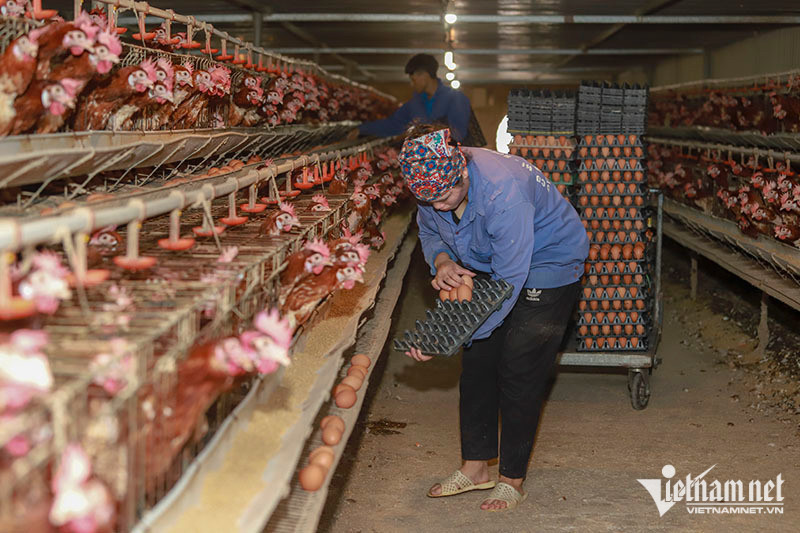
MARD has submitted a report on National Assembly resolutions and has answered inquiries raised last session, especially ones on animal husbandry.
The report shows that Vietnam heavily relies on imports, especially materials for animal feed. Vietnam has to import the majority of breeders needed as domestic sources satisfy only part of demand.
Vietnam’s livestock industry is mostly small scale farms that cannot ensure biological security. Epidemic control and food safety remain a problem, while the from-farm-to-table production model still cannot develop.
Vietnam’s livestock industry has been developing rapidly but unsustainably, with regular fluctuations in total herds, output and prices, thus affecting farmer and consumer benefits.
Analysts said demand for animal feed for the domestic livestock industry will continue to rise. Vietnam needs 30 million tons of animal feed each year, and the figure will be 35 million tons by 2025 and 45 million tons by 2030.
Since 2016, animal feed imports have accounted for 70 percent of total demand (19-20 million tons), while the domestic output has satisfied the remaining 30 percent of demand (10-11 million tons).
Vietnam imports 9.5 million tons of maize each year, 4 million tons soybean oil-cake, 2 million tons of wheat and bran of different kinds, 1 million tons of DDGS (Dried Distillers Grain Solids) and nearly 1 million tons of animal-sourced feed.
These are not produced domestically, because Vietnam’s products cannot compete with products from the US, Brazil and Argentina, which have large growing areas and high yields. Also, rice production can bring higher profits than these materials.
In Vietnam, there are 1 million hectares of maize growing areas. With a yield of VND4.5 tons per hectare per annum, Vietnam can produce 4.5 million tons a year, which is used for many purposes. Vietnam doesn’t have advantages in maize and soybean yield and output compared with other countries.
Vietnam can produce a big output of rice and cassava, but there is not much surplus to make animal feed. Farmers tend to export bran to China as they earn more from imports than from domestic consumption.
Rice is not used to make animal feed, because rice prices are always higher than maize (except in 2021-2022, when global maize prices increased sharply).
In April 2023, domestic rice prices surged to over VND10,000 per kilogram, while maize was just VND8,000.
Vietnam will continue to import materials to produce animal feed domestically. The solutions on making materials for animal feed production cannot entirely replace imports.
Big losses in livestock industry
Millions of Vietnamese livestock farming households have suffered heavily in recent years as input material prices keep increasing, while prices of finished products fluctuate all the time. Sometimes farmers have to sell products below production costs.
Talking about the development of the domestic livestock industry at the inter-ministerial meeting (MARD and the Ministry of Public Security – MPS), Deputy Minister of MARD Phung Duc Tien said he has witnessed many businesses having to sell motorbikes, cars and red books (land use right certificates) because of losses.
Prior to that, he reported that 49-51 million pigs and 2 million poultries were slaughtered and 18 billion eggs were consumed each year. It is estimated that 6 million farming households are involved in this production field. However, he admitted that many households had incurred big losses and had gone bankrupt.
Tien, while noting that farmers have to observe the rules of the market and they should not expect the government’s support, believes that to some extent, farmers and businesses need to be protected.
He said agencies and local authorities need to work well to prevent smuggling and strictly control imports. It is necessary to boost exports based on commercial negotiations, and create epidemic-free area in the border area that serves imports and exports.
In the report, MARD promised to update information and provide market analyses and forecasts to help farmers draw up their production plans.
The ministry also promised to help connect enterprises with localities with advantages in cultivation to build animal feed material growing areas; develop market-based animal husbandry, and promote the advantages of every locality.
Tam An